December 2025
The global frozen food market size was reached at USD 203.15 billion in 2024 and is projected to grow from USD 214.32 billion in 2025 to nearly USD 347.01 billion by 2034, growing at a CAGR of 5.5% during the forecast period from 2025 to 2034. The advancement in cod chain infrastructure, changing consumer lifestyle, and urbanization drive this market to grow rapidly.
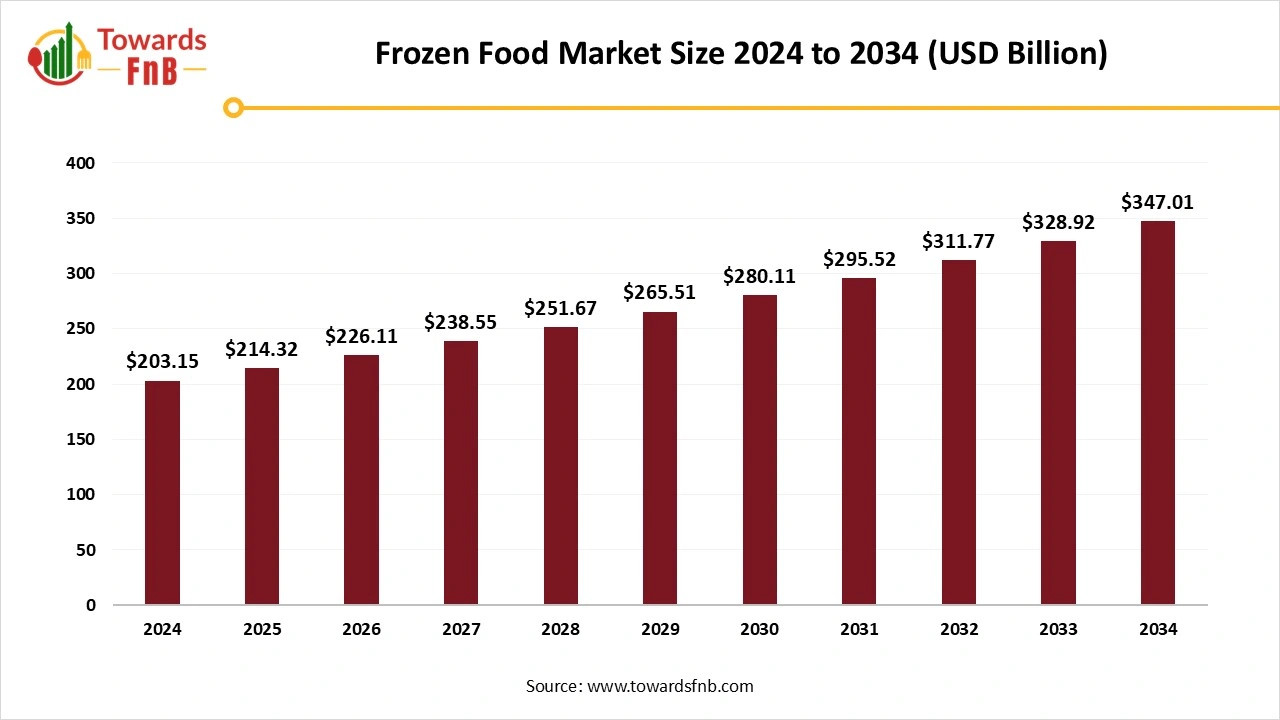
| Study Coverage | Details |
| Growth Rate from 2025 to 2034 | CAGR of 5.5% |
| Market Size in 2025 | USD 214.32 Billion |
| Market Size in 2026 | USD 226.11 Billion |
| Market Size by 2034 | USD 347.01 Billion |
| Largest Market | North America |
| Base Year | 2024 |
| Forecast Period | 2025 to 2034 |
| Regions Covered | North America, Europe, Asia-Pacific, Latin America, and Middle East & Africa |
The frozen food market has seen significant growth in recent years, frozen food widely using worldwide. Frozen food refers to edible items preserved by the process of freezing. The Frozen food includes frozen fruits, vegetables, ready-to-eat meals, desserts, bakery product, seafood, meat, and many different varieties. The frozen food not only preserves the freshness and quality of the product but also locks the essential nutrients and extends the shelf life of the product.
Changing lifestyles and the rise in the disposable income of the growing population led the market to grow. Consumers are willing to spend on premium healthy and convenient frozen food options due to hectic working schedules and option for convenient ready-to-eat quick and easy meal solutions. The association of the leading consumer and food and beverages brands in development and innovations of the new products accelerate the growth of the market.
The advancement in the freezing techniques helps in better product quality and longer shelf life maintaining the nutritional value of the food. Freezing techniques such as individual quick freezing, cryogenic freezing, hydro-fluidization freezing and high-pressure processing with freezing. Sustainable and smart packaging reduces waste and improves the freshness of the product for a longer period. Using tight and transparent film that covers the product directly reduces oxygen exposure and extends shelf life while using less plastic and reducing waste generation.
The frozen food market faces the challenge of high energy consumption and expensive storage infrastructure. These cost affects manufacturers as well as consumers as they add to the cost of the final product. The equipment used also requires frequent maintenance to ensure efficiency. Temperature control transport requires more fuel as compared to other transportation which adds up to the cost. The freezers used for storage of the products are not the normal refrigerators they require a significant amount of power supply for the working which increases electricity usage. This hinders the growth of the market as the cost remains a major challenge.
In the frozen food industry, the raw material procurement deals with strategic procedure of purchasing, evaluating, processing, sourcing and packaging of nutritional and convenient food products from the various natural, plant-based, natural and clean-label food products.
Branding and Packaging for global frozen food market focuses on creating packaging which may ensures remain stable, safe and fresh by protecting them from contamination, light and moisture.
The waste management and recycling of frozen food focus on the health and wellness of consumers seeking convenience and easy-to-prepare into nutritious, frozen and quick food options.
North America Dominated the Frozen Food Market in 2024.
The North America frozen food market size was valued at USD 69.07 billion in 2024 and is expected to grow from USD 72.87 billion in 2025 to reach approximately USD 117.98 billion by 2034, at a compound annual growth rate (CAGR) of 5.5% during the forecast period from 2025 to 2034.
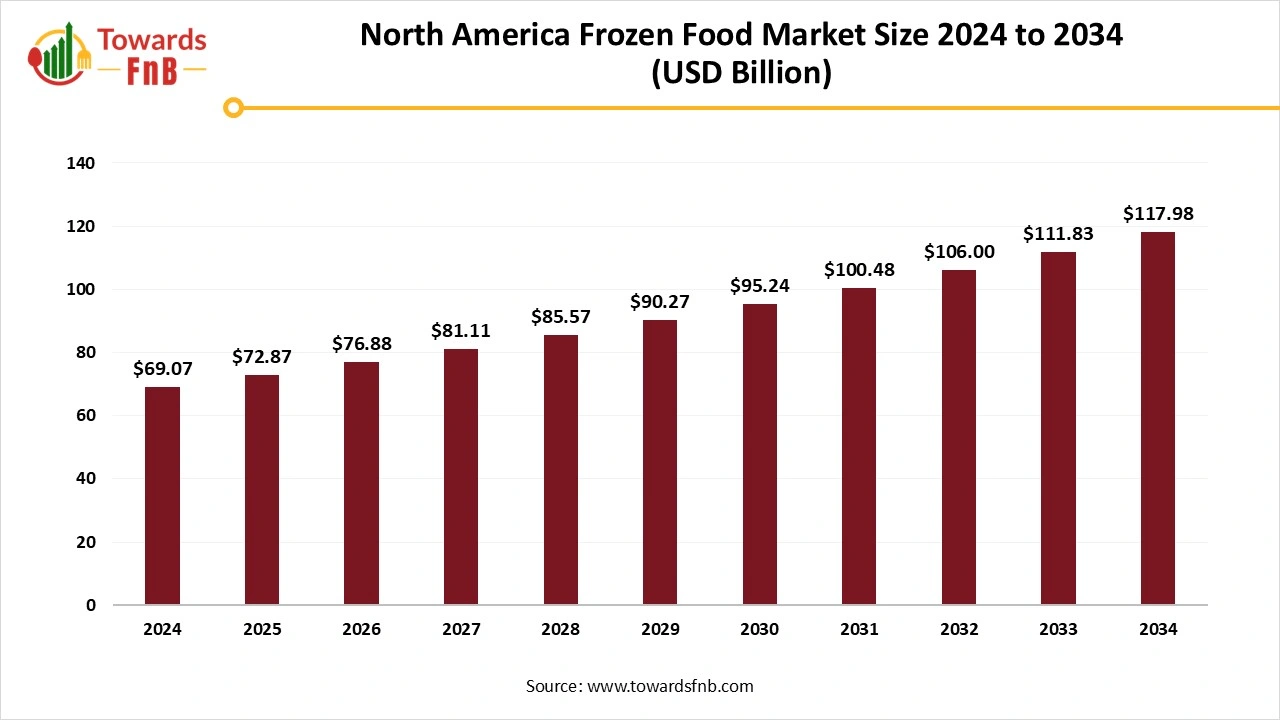
It holds the largest market of frozen products due to its busy lifestyle, high disposable income and well-developed cold chain infrastructure. The strong demand for ready-to-eat meals is very high among the working and young population, and the plant-based frozen food and snacks drive the market in this region. Growth in private-label products from supermarkets is growing rapidly and adoption of healthy, organic, gluten-free frozen food drives the market.
United States Frozen Food Market Trends
The U.S. frozen food market is growing rapidly, driven by busy lifestyles, demand for convenience, and advances in freezing technology. Consumers increasingly prefer healthy, plant-based, and premium options. E-commerce and home delivery are expanding access, while innovation in ready meals and snacks continues, reshaping the market and creating new opportunities for brands.
Asia Pacific Expects the Fastest Growth in the Market During the Forecast Period.
The rising urbanization, changing dietary habits, and growing middle-class population in the region contribute to the growth and demand for the market. The increase in demand for the ready to eat meals and snacks and the expansion of online shopping and delivery to the doorstep has helped this market to grow at a faster rate along with the increasing disposal income. Changing food preferences and shifting towards healthy and nutritional food for longer duration grows demand for frozen food.
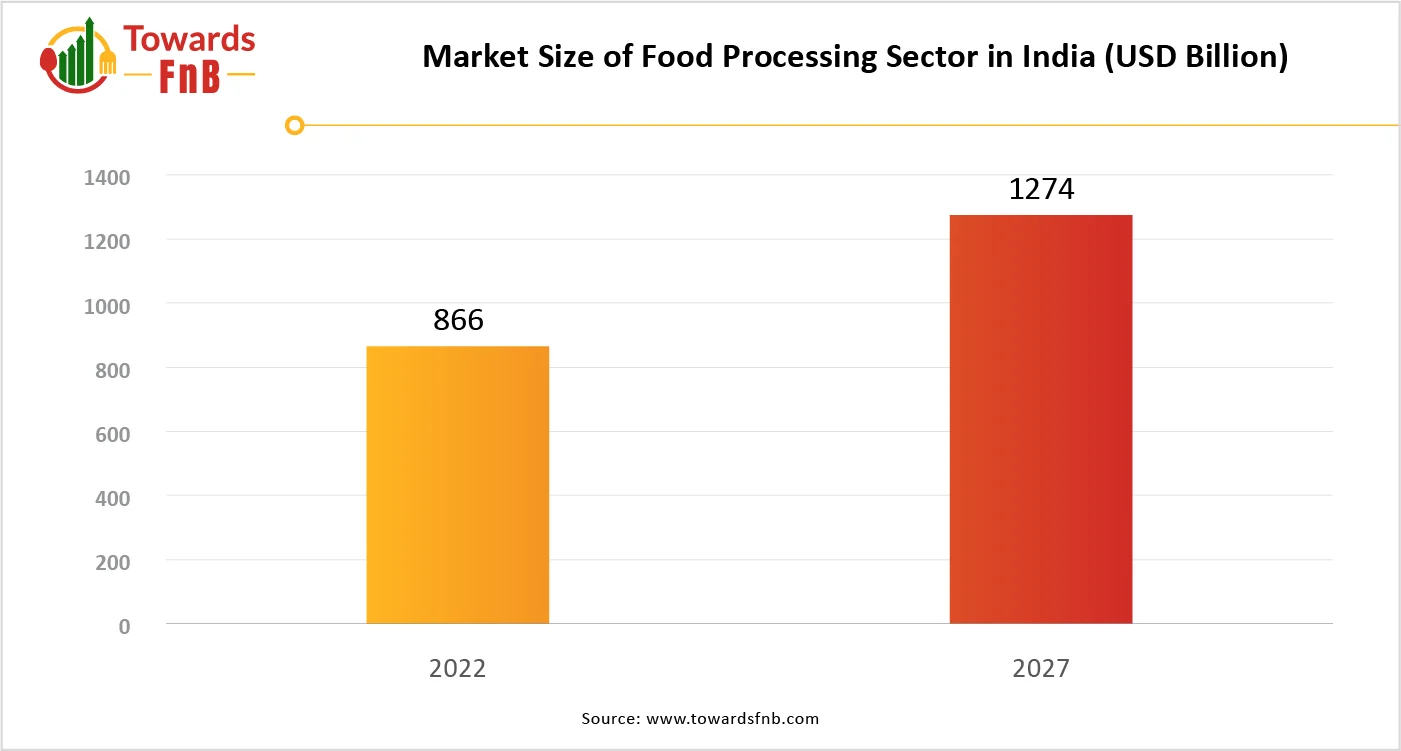
India Frozen Food Market Trends
India’s frozen food market is booming. Convenience oriented lifestyles, rising disposable incomes, and rapid urbanization are fueling demand for ready to cook and ready to eat frozen meals. Improved cold chain infrastructure and the growth of e commerce and organized retail are expanding distribution beyond metros into smaller cities.
Why is Europe Driving the Frozen Food Market?
Europe is expected to grow at a notable rate during the forecast period. The market growth in the region is driven by factors such as strong consumer trust in product quality and safety, a well-developed cold chain network, increasing demand for convenience foods, increasing consumer preferences towards sustainability, demand for convenient meal options and increasing changing lifestyles. The UK, Germany and France are the major countries driving the market growth.
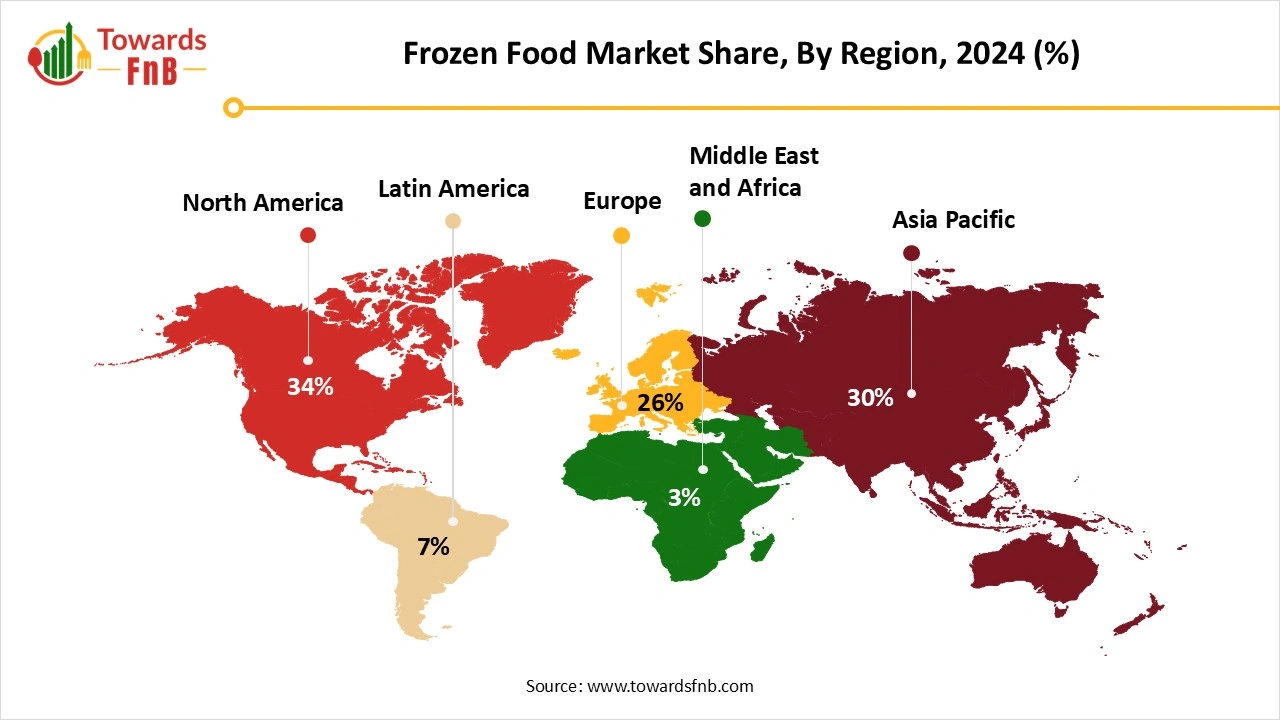
The UK Frozen Food Market Trends
The global market in UK is driven by the increasing consumer focus towards health and wellness and rising introduction of innovative and new frozen food products, such as international cuisines and gourmet options, in response to changing consumer preferences.
Why is the Middle East and Africa Transforming the Frozen Food Market?
The market growth in the region is driven by factors such as rapid urbanization, changing busy lifestyles, expansion of e-commerce platforms, health-conscious options, and increasing convenience, quick and easy-to-prepare food options.
South Africa Frozen Food Market Trends
The market growth in the country is driven by increasing demand for convenience, increasing consumer busy and changing lifestyles, increasing consumer focus on environmental concerns and health awareness.
How is Latin America Driving the Plant-based Protein Market in 2024?
The Latin America plant-based protein industry is driven by increasing demand for nutritional value, shelf life, and convenience, busy lifestyles and growing rapid urbanization. Brazil and Mexico are the major countries driving the market growth.
Mexico Frozen Food Market Trends
The frozen food industry in Mexico is witnessing major growth, driven by the demand for nutritional value, shelf life and convenience, growing middle class population, consumer busy lifestyles and growing rapid urbanization.
The Ready Meals Segment Dominated the Frozen Food Market in 2024.
The growth of the segment is attributed to the rising preference of the ready meals by the population of the developed countries due to the busy lifestyle and growing interest among younger generation towards the ready to eat meals or snacks products is driving the growth of the segment. The fruit and vegetables segment expects a significant growth in the market during the forecast period. The growth of the segment is owing to the rising demand for the health and ready to eat fruits or vegetables which can be directly consumed and can eliminate the chopping and washing process boosts the demand for the segment.
The Offline Segment Dominated the Frozen Food Market in 2024.
The rising urbanization across the developing countries and the availability of the wide range of supermarkets, retail stores, and others with the greater availability of the food products with different brands and attractive offers and discounts that boosts the adoption of the offline distribution channel segment. The online segment expects a significant growth in the market during the predicted period. The increasing disposable income in the population and the growing inclination towards the e-commerce and food delivery sector for the household products are driving the demand segment.
The Individual Quick-Freezing Technology Segment Dominated the Frozen Food Market in 2024.
This is an advanced freezing technique that preserves the texture and food quality of the product for a longer duration, the technology is effectively used in the preserving the different types of food for a long time with maintaining their nutritional properties. The blast-freezing segment expects a significant growth in the market during the forecast period. This is a traditional method used, where the cold air is blown over food products. Commonly used for meat, seafood, bakery items, and vegetables. This is the most conventional and cost-effective for bulk freezing of the food product.
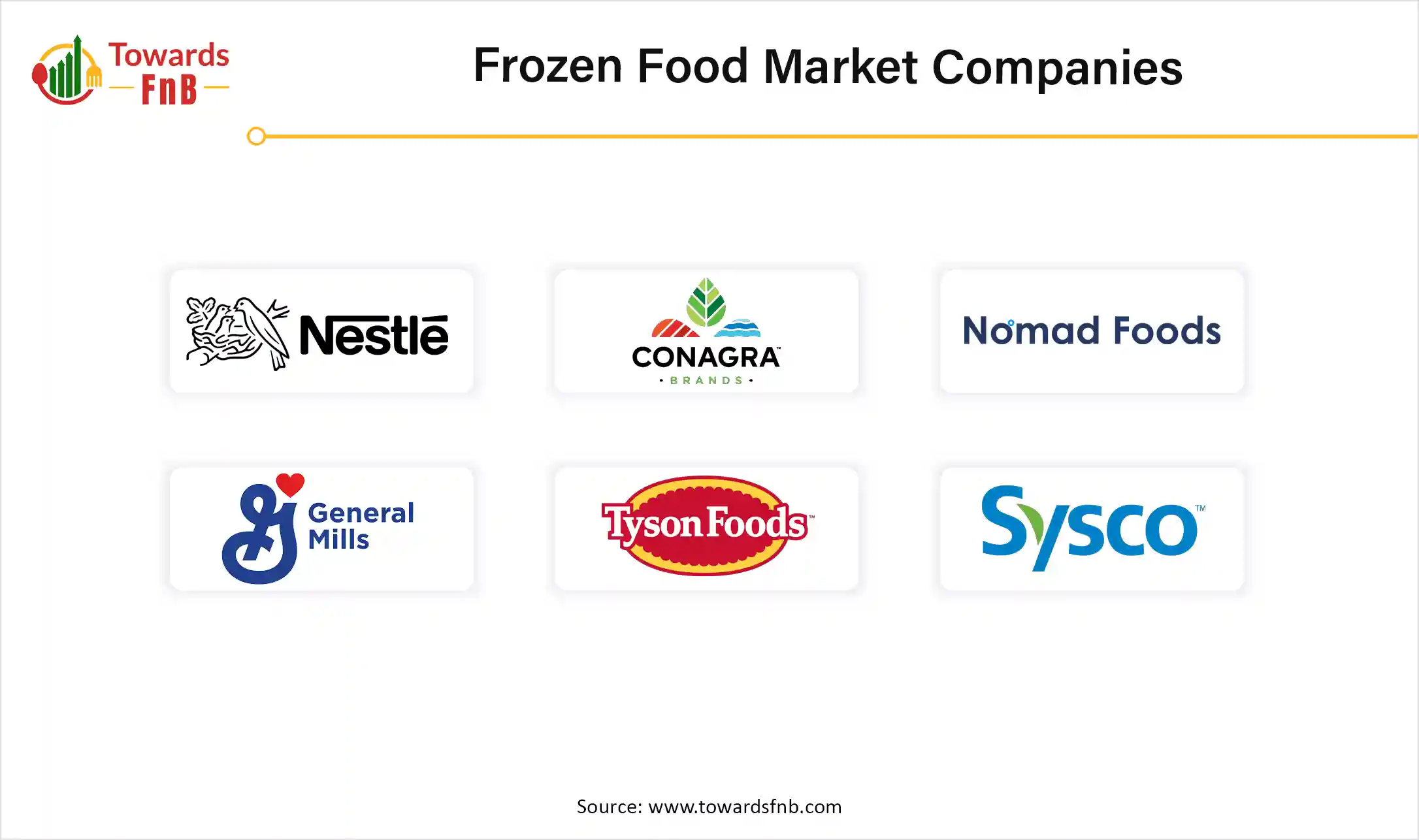
By Product Type
By Freezing Technology
By Distribution Channel
By Region
December 2025
December 2025
December 2025
December 2025